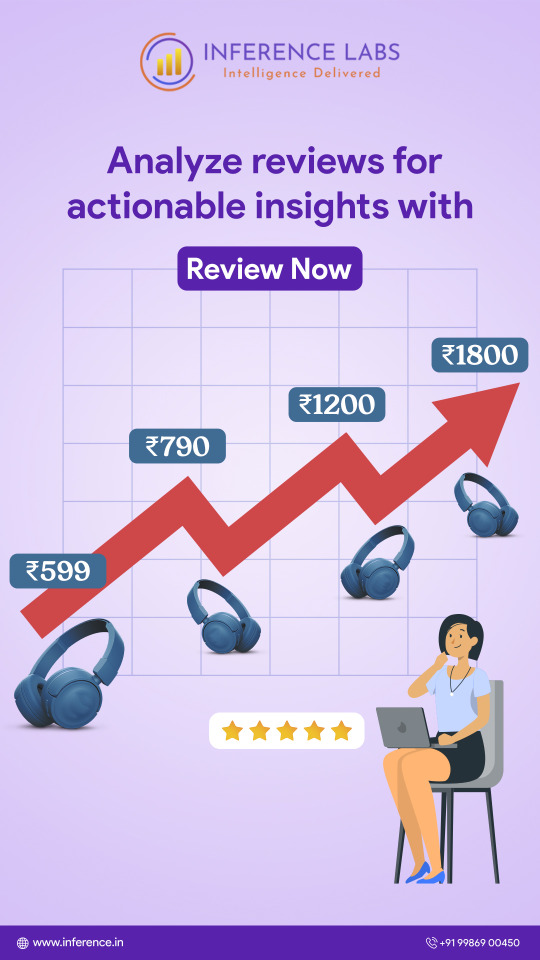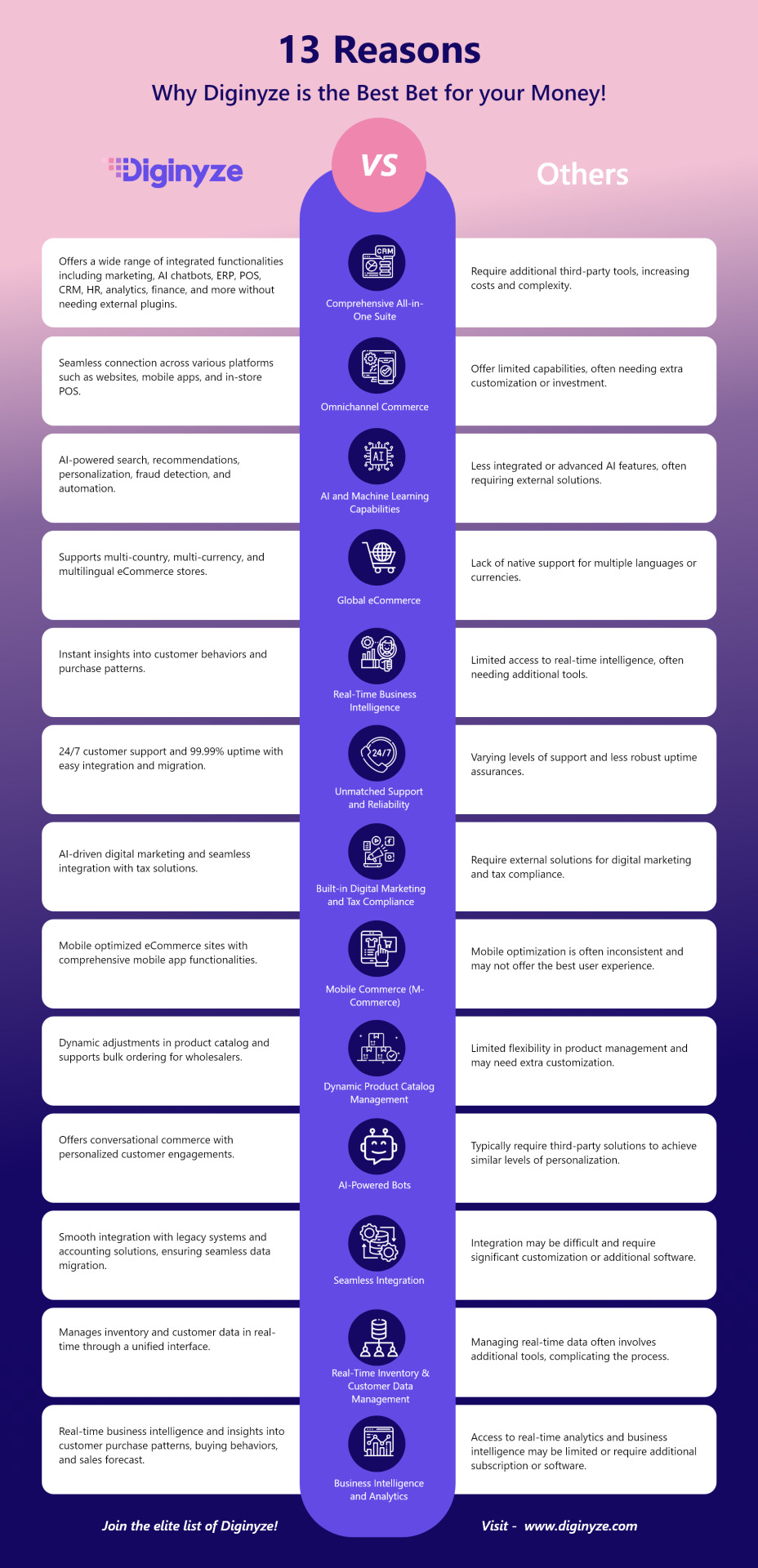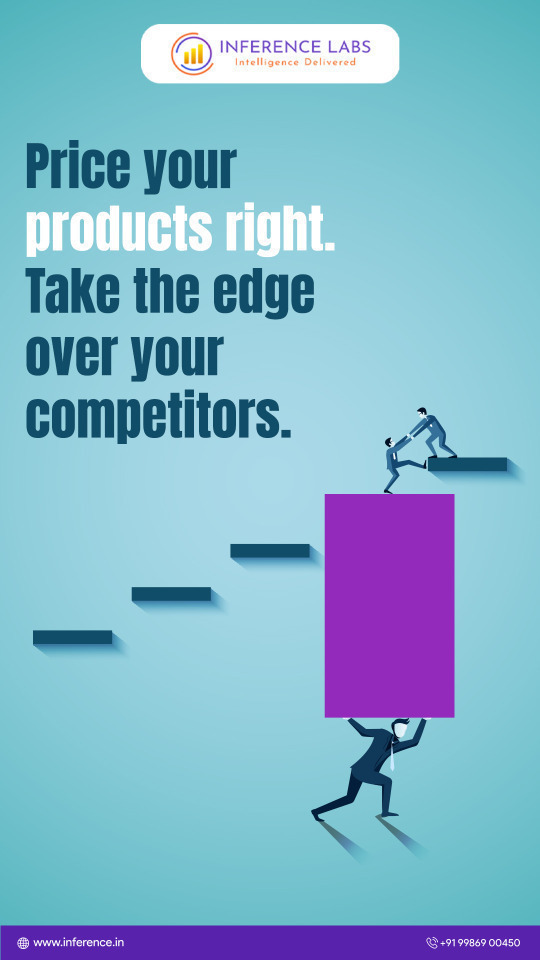#globalecommerce
Explore tagged Tumblr posts
Text

Looking for the Best data analytics company in India? Inference Labs is your top choice, delivering cutting-edge solutions in the field of artificial intelligence.
#EcommerceAnalytics#CompetitorAnalysis#SentimentTracking#GlobalEcommerce#MarketIntelligence#OnlineRetailers#BusinessIntelligence#DataAnalysis#ConsumerInsights#SocialMediaMonitoring#EcommerceTrends#BrandMonitoring#CompetitiveIntelligence#EcommerceSolutions#CustomerFeedback#RetailStrategy#MarketResearch#EcommerceInsights#SentimentAnalytics#OnlineBusiness#EcommerceCompetitors#MarketTrends#CompetitorInsights#EcommerceStrategy#BrandAnalysis#CustomerSentiment#EcommerceData#GlobalMarketplace#CompetitorTracking#EcommercePlatform
2 notes
·
View notes
Text
#DropshippingTools#DropshippingMarket#ECommerceTools#OnlineRetail#ECommerceTechnology#AutomationTools#RetailTech#SupplyChainInnovation#GlobalECommerce#DigitalMarketing#SalesTools#DropshippingPlatform#ECommerceTrends#DropshippingBusiness#MarketTrends2024#OnlineBusinessTools
0 notes
Text
The Impact of Sales Tax on E-Commerce Businesses

As e-commerce continues to soar, sales tax is becoming a critical factor shaping online business operations. From navigating complex compliance rules to adjusting pricing strategies, it’s essential to stay informed! 🛒💰
Here's what online businesses need to know: ✅ Sales Tax Collection Requirements ✅ Complexity of Sales Tax Compliance ✅ Operational Costs & Resources ✅ Impact on Pricing & Profit Margins ✅ Global E-Commerce & VAT/GST ✅ Strategic Implications for Growth Understanding these key factors is crucial to keeping your business competitive and compliant in today’s global marketplace. 🌍
0 notes
Text
Global E-Commerce Transactions Will Hit $11.4T by 2029: RPT

Global e-commerce transactions will skyrocket to $11.4 trillion by 2029, a 63% increase from an estimated $7 trillion in 2024, according to a report by Juniper Research. https://jpmellojr.blogspot.com/2024/08/global-e-commerce-transactions-will-hit.html
0 notes
Text
Diginyze Vs Others
Looking for an intelligent alternative to your eCommerce platform.
Discover why Diginyze is your best bet when it comes to eCommerce platform. From AI chatbots to real-time analytics, here are 13 reasons why Diginyze leads and others follow. Discover all 13 reasons here: https://www.diginyze.com/diginyze-vs-others/

#Infographic#Diginyze#AllInOneSolution#BusinessTransformation#FutureOfCommerce#OmnichannelCommerce#MachineLearning#GlobalEcommerce#RealTimeAnalytics#BusinessIntelligence#SocialCommerce#CustomerSupport#DigitalMarketing#MobileCommerce#ProductManagement#ConversationalAI#InventoryManagement#TaxCompliance#EcommercePlatform#DigitalTransformation
0 notes
Text
🌍 L'Ère Numérique des Investissements : L'E-Commerce 🌍
Avec l’adoption croissante du mobile et la révolution technologique, l'e-commerce est plus pertinent que jamais ! Les ventes mondiales de commerce électronique mobile représentent déjà environ 73 % de l'ensemble des ventes en 2021. 📱
Dans son nouvel article, Supeuro.com détaille les fascinantes opportunités d'investissement dans l’e-commerce. De la portée mondiale sans barrières géographiques aux faibles coûts initiaux, découvrez pourquoi et comment investir judicieusement dans ce secteur en pleine expansion. 🔍
Que vous soyez un investisseur chevronné ou simplement curieux du potentiel offert par l’e-commerce, cet article est fait pour vous ! 📘
#EreNumérique#MobileShopping#InvestissementDigital#AvenirECommerce#GuideInvestissement#GlobalECommerce#StratégiesInvestissementECom#DigitalTransformation#SupeuroGuide#ExpansionOnline#supeuro#investissement#blog supeuro#supeuro.com#investir
0 notes
Text

"Unlock the power of data with Inference Labs, your trusted partner in analytics excellence. Discover why we're known as the Best Data Analytics Company in India."
#EcommerceAnalytics#CompetitorAnalysis#SentimentTracking#GlobalEcommerce#MarketIntelligence#OnlineRetailers#BusinessIntelligence#DataAnalysis#ConsumerInsights#SocialMediaMonitoring#EcommerceTrends#BrandMonitoring#CompetitiveIntelligence#EcommerceSolutions#CustomerFeedback#RetailStrategy#MarketResearch#EcommerceInsights#SentimentAnalytics#OnlineBusiness#EcommerceCompetitors#MarketTrends#CompetitorInsights#EcommerceStrategy#BrandAnalysis#CustomerSentiment#EcommerceData#GlobalMarketplace#CompetitorTracking#EcommercePlatform
0 notes
Text
काशी धरोहर परियोजना के अंतर्गत उत्पादों को ई-मार्केटिंग के ज़रिये पूरी दुनिया में कराया जाएगा उपलब्ध
काशी की बेटियों का हुनर अब देश के साथ ही सात समंदर पार अमेरिका में भी सजेगा। शनिवार को हैंडमेड वुडेन की पहली खेप में बाबा विश्वनाथ की 50 प्रतिकृति को अमेरिका भेजा गया। द स्माल इंडस्ट्रीज एसोसिएशन के अध्यक्ष राजेश भाटिया और हुनर-ए-बनारस के प्रबंध निदेशक अजय सिंह ने हैंडमेड वुडेन को अमेरिका रवाना किया। पांच से छह दिन में यह अमेरिका पहुंच जाएगा।
#KashiHeritageProject#WorldwideAvailability#Emarketing#GlobalMarket#Kashiproducts#HeritageProducts#OnlineMarketing#InternationalMarketplace#GlobalEcommerce#KashiWorldwide
0 notes
Text
What is the best international payment gateway for Magento 2?
Stripe: Stripe is known for its developer-friendly API and global reach. It supports a wide range of payment methods and currencies, making it suitable for international businesses.
PayPal: One of the most widely used and recognized payment gateways globally. PayPal offers seamless integration with Magento 2, enabling customers to pay with their PayPal accounts or credit/debit cards.
Authorize.Net: A long-established payment gateway that provides secure and reliable payment processing solutions for Magento 2 stores.
Braintree (owned by PayPal): Braintree offers a modern and easy-to-integrate payment solution with global coverage, supporting various payment methods and currencies.
Adyen: Adyen is known for its extensive global coverage and support for various payment methods, including local ones, making it a good choice for international businesses.
2Checkout (now Verifone): 2Checkout provides support for multiple payment methods and is well-suited for international transactions.
Before choosing a payment gateway, consider factors such as transaction fees, currency support, security features, customer support, and compatibility with your target markets. Additionally, the payment gateway landscape may have changed since my last update, so I recommend conducting thorough research and checking for any new options and updates in the market.
#Magento2#PaymentGateway#Ecommerce#OnlinePayments#InternationalBusiness#DigitalPayments#SecureTransactions#GlobalEcommerce#OnlineStore#SmallBusinessTips#BusinessSolutions#TechNews#Fintech#OnlineRetail#PaymentProcessing#DigitalCommerce#OnlineSales#Entrepreneurship#SmallBusinessOwners#EcommercePlatform
0 notes
Text
#ShopifyApp#EasyCrossborderShipping#GlobalEcommerce#ShippingSimplified#InternationalShipping#ShopifyStore#SeamlessShipping#GlobalExpansion#EfficientLogistics#EcommerceGrowth
0 notes
Text

At Inference Labs, our expertise as the best price analysis company in India is evident in our ability to analyze market trends and competitor pricing, empowering businesses to stay competitive and profitable.
#EcommerceAnalytics#CompetitorAnalysis#SentimentTracking#GlobalEcommerce#MarketIntelligence#OnlineRetailers#BusinessIntelligence#DataAnalysis#ConsumerInsights#SocialMediaMonitoring#EcommerceTrends#BrandMonitoring#CompetitiveIntelligence#EcommerceSolutions#CustomerFeedback#RetailStrategy#MarketResearch#EcommerceInsights#SentimentAnalytics#OnlineBusiness#EcommerceCompetitors#MarketTrends#CompetitorInsights#EcommerceStrategy#BrandAnalysis#CustomerSentiment#EcommerceData#GlobalMarketplace#CompetitorTracking#EcommercePlatform
0 notes
Video
Plunging Tax Revenue Accelerates Debt-Ceiling Deadline
1 note
·
View note
Text
The State of Global E-commerce: Trends and Statistics
E-commerce, short for electronic commerce, refers to the buying and selling of goods or services online. Over the past decade, e-commerce has grown by leaps and bounds as Internet users around the world have embraced the convenience of online shopping. As a result, the global e-commerce market has reached a staggering $5.4 trillion by 2022 according to Statista. In this digital age, businesses need to be aware of the latest trends and statistics in global commerce. This will help them find new opportunities, improve their strategies and stay ahead of the competition.
It's important to understand global e-commerce trends and statistics.
In today's connected world, e-commerce is no longer restricted by geography or borders. Businesses have the ability to sell their products and services to customers all over the world, providing new markets and growth opportunities. However, it also means more intense competition and the need for companies to keep up with the latest global e-commerce trends and statistics. This allows companies to gain valuable insights into consumer behavior, emerging technologies and market trends. These insights will help them optimize their customer experience, sales and marketing strategies and ultimately drive business growth and profitability.
In this article,we will discuss about the globally state of ecommerce and the major global trends after the global statistics and finally the the future trends.
I. The state of global e-commerce currently
1. Size and growth of worldwide ecommerce market
The global e-commerce market has grown significantly in recent years, and this trend is expected to continue in the coming years. According to eMarketer, global e-commerce sales reached $4.2 trillion in 2020, representing a 27.6 percent increase over 2019. This increase was largely driven by the COVID-19 pandemic, which led to an accelerated shift to online shopping.
Looking ahead, eMarketer predicts that global e-commerce sales will continue to grow at a rapid pace, reaching $5.4 trillion by 2022 and $6.4 trillion by 2024. This is driven by several parameters, including access to the Internet and mobile devices, the rise of social media and the rise of digital payment solutions.
In terms of regional trends, Asia Pacific is currently the largest e-commerce market in the world, accounting for more than 62% of global e-commerce sales in 2020. China is the largest e-commerce market in the region, followed by Japan and South Korea. North America and Europe are also major players in the global e-commerce market, with the U.S. and the U.K. being the largest markets in their respective regions.
2. The top e-commerce markets and the characteristics
The world's largest e-commerce markets are diverse and each has its own unique characteristics.
Here are some of the specifics of the largest e-commerce markets:
China: China is the largest e-commerce market in the world, with sales that reached $1.412 trillion in 2022. The market is largely controlled by two major players, Alibaba and JD.com, which together account for more than 80% of online retail sales in China. Mobile commerce is also very popular in China, with over 80% of online sales made via mobile devices.
United States: The U.S. is the second largest e-commerce market in the world, with online sales expected to reach $986 billion by 2022 according to Statista. The market is highly competitive, with Amazon dominating the sector with a market share of over 38%. The U.S. market is also characterized by high consumer confidence in online shopping and a sophisticated logistics and delivery infrastructure.
United Kingdom: The United Kingdom is one of the most mature e-commerce markets in the world, with online sales expected to reach $199.9 billion by 2022 according to Statista. The market is characterized by a significant level of cross-border shopping, with UK consumers frequently making purchases from overseas retailers. The UK market is also known for its state-of-the-art delivery infrastructure and the popularity of click-and-collect services.
Japan: Japan is the third largest e-commerce market in the world, with online sales expected to reach $215 billion by 2022 according to Statista. The market is characterized by a preference for domestic retailers, with local companies like Rakuten and Amazon Japan dominating the sector. Mobile commerce is also popular in Japan, with over 70% of online purchases made via mobile devices.
South Korea: South Korea is a fast-growing e-commerce market, with online sales expected to reach $124.2 billion by 2022 according to Statista. The market is characterized by a high degree to innovations, with retailers testing new technologies such as augmented reality and virtual reality to improve the shopping experience. The market is also highly competitive, with major players such as Coupang and Gmarket.
3. Regional variations and trends in e-commerce
E-commerce trends and specifics differ from region to region due to differences in consumption, infrastructure and regulation.
Here are some of the regional e-commerce trends and differences:
Asia Pacific: Asia Pacific is the largest e-commerce market in the world, and its rapid growth is largely driven by China. Mobile commerce is very popular in this region and social media is often leveraged as a platform for online shopping. Cross-border e-commerce is also common in Asia-Pacific, with consumers frequently making purchases from foreign retailers. However, the region is also subject to challenges such as the diversity of regulations and infrastructure in different countries.
Europe: E-commerce is well established in Europe, with countries like the UK, Germany and France leading the way. Cross-border shopping is also prevalent in Europe, with consumers often shopping in other European countries. The region is notable for a high level of regulation, with the EU implementing regulations such as the General Data Protection Regulation (GDPR) and the Consumer Rights Directive.
North America: The United States and Canada are the largest e-commerce markets in North America. The region is characterized by high consumer reliability in online shopping and a sophisticated logistics and delivery infrastructure. However, there are also constraints such as the prevalence of counterfeit products and the high cost of shipping to Canada.
Latin America: E-commerce is spreading rapidly in Latin America, but the area faces challenges such as lack of infrastructure and low reliability of online shopping. Cross-border shopping is also relatively low in Latin America due to high shipping costs and long delivery times.
Middle East and Africa: E-commerce is still underdeveloped in the Middle East and Africa, but the region has significant potential for development. Cash on delivery is a popular payment method in this region, and mobile commerce is also gaining popularity. However, infrastructure and regulatory issues still need to be addressed.
4. Knowledge in consumer preferences and behavior
Consumer behavior and preferences are constantly evolving in the e-commerce industry, driven by several elements such as technology, ease of use and price.
Here are some insights into consumer behavior and preferences:
Mobile commerce: With the proliferation of smartphones, consumers are increasingly using their mobile devices to shop online. In fact, mobile commerce currently accounts for a significant portion of e-commerce sales in many regions, such as China and the Asia-Pacific region.
Personalization: Internet users are looking for personalized moments when they shop online.This includes personalized product recommendations, targeted advertising and personalized promotions. Retailers that offer personalized experiences are likely to increase customer loyalty and conversion rates.
Convenience: Consumers value ease of use when shopping online. This includes features such as fast and reliable delivery, easy returns and a smooth checkout process. Retailers that prioritize convenience are more likely to satisfy their customers and build loyalty.
Social commerce: Social media platforms such as Instagram and Facebook are increasingly being used to make online purchases as a result. Consumers want a seamless shopping experience in their social media feeds, with better access to product information and a simple checkout process.
Sustainability: Consumers are increasingly mindful of environmental preservation and are looking for retailers that prioritize sustainability. This includes features such as environmentally friendly packaging and sustainable sourcing of materials. Retailers who prioritize sustainability are able to attract a loyal customer base that appreciates their commitment to environmental responsibility.
II. Major global ecommerce trends
1. The importance and rise of mobile ecommerce
It is one of the major trends in global e-commerce over the past few years, and it continues to grow in size and importance.
Here are some key trends in mobile commerce:
Rapid progression: Mobile commerce has expanded rapidly in recent years, with a significant increase in the number of consumers using mobile devices to make purchases. According to eMarketer, global m-commerce sales are expected to exceed $416 trillion by 2022, accounting for more than half of all e-commerce sales.
Importance of Mobile Optimization: With the growth of m-commerce, it is increasingly necessary for retailers to make their websites and applications compatible with mobile devices. Consumers expect a smooth, user-friendly experience when shopping on their mobile devices, with fast page load times, easy navigation and a simple checkout process.
Mobile Payments: Mobile payments are now a key aspect of mobile commerce, as consumers seek fast and secure ways to make payments on their mobile devices. This includes options such as mobile wallets (e.g. Apple Pay, Google Pay), one-click payments and biometric authentication.
Social commerce: Social media platforms are now a key aspect of mobile commerce, with retailers using platforms such as Instagram and Facebook to reach consumers and sell their products. Social commerce involves the integration of e-commerce features into social media platforms, allowing consumers to make purchases directly from their social media feeds.
2. The development of social commerce
Here are some key elements of the birth of social commerce:
The significant growth of social media: Social media platforms such as Facebook, Instagram and Pinterest have become an integral part of many consumers' lives. Retailers are harnessing the power of social media to reach a wider audience and increase sales. Social media platforms allow for a more effective and engaged way to connect with consumers, building brand awareness and customer loyalty.
Easy product discovery: Social media platforms offer consumers an easy way to discover products they may not have seen before. Consumers can browse their news feeds and see products used and recommended by their friends, influencers and brands they follow. This makes it easier for retailers to reach consumers who might not have been looking to buy their products.
Streamlined checkout process: Social commerce allows consumers to make purchases without leaving their social media feeds, simplifying the checkout process and decreasing cart abandonment. Many social media platforms now offer in-app payment functionality, which allows consumers to purchase products directly on the platform.
Influencer Marketing: Social media platforms have given rise to influencer marketing, where retailers work with social media influencers to promote their products. Influencers have a large social media following and help retailers reach new audiences and generate sales.
Data and analytics: Social media platforms offer retailers valuable data and analytics that can be used to improve their social commerce policies. Retailers have the ability to track metrics such as engagement, click-through rates and conversion rates.
III. Statistics and insights on global ecommerce
E-commerce revenues are predicted to surpass $4.9 trillion by 2025, according to a Shopify analysis.
As a result of the epidemic, e-commerce revenues are expected to increase by 27.6 percent in 2020.
With projected sales of $1.9 trillion in 2020, China will surpass the United States as the largest e-commerce market, with $794.5 billion in sales.
According to Statista, mobile sales will make up 72.9% of all e-commerce purchases in 2021 as mobile commerce expands quickly.
Shoppers are increasingly doing their buying on online stores like Amazon, eBay, and Alibaba. According to a Webinterpret research, markets actually make up 62 percent of all online purchases worldwide.
According to a Walker Sands analysis, free delivery is a significant factor in e-commerce purchases, with 90% of buyers citing it as their main reason for making an online purchase.
According to a survey by Epsilon, personalization is becoming more and more essential in e-commerce, with 80% of consumers indicating they are more likely to do business with a brand that delivers tailored experiences.
According to Juniper Research, e-commerce fraud will cause losses of $25.6 billion by 2024, making it a growing issue.
According to a GlobalWebIndex survey, social media is becoming a more significant part of e-commerce, with 55% of consumers reporting completing a purchase using a social media platform.
According to a survey by Accenture, customers are placing a higher importance on sustainability, with 70% indicating they are willing to pay extra for ecologically friendly items.
IV. Prospects for global e-commerce
The predictions for the future of global e-commerce are very positive. Here are some trends and predictions:
Continued growth: E-commerce is expected to continue its upward trajectory, with global sales expected to reach $6.4 trillion by 2024, according to eMarketer.
Mobile is king: Mobile commerce will continue to dominate, with mobile sales making up an even larger share of e-commerce sales.
Augmented Reality: Augmented reality (AR) technology will become more prevalent in e-commerce, allowing consumers to virtually try on products before purchasing them.
Voice commerce: Voice assistants such as Alexa and Google Assistant are expected to play a larger role in e-commerce. According to Juniper Research, voice commerce is expected to reach $80 billion by the end of 2023.
Social commerce: Social media platforms will continue to integrate e-commerce features, making it easier for consumers to purchase products directly from social media sites.
Subscription Services: Subscription services will gain traction as consumers choose to have products such as food, beauty items or pet products delivered on a regular basis.
Same-day delivery: Same-day or even one-hour delivery options will become increasingly common as retailers look for ways to offer faster and more convenient delivery options.
Artificial intelligence: Artificial intelligence (AI) will be increasingly leveraged to personalize the shopping experience, provide customer service and optimize logistics and supply chain management.
Sustainability: Sustainable and environmentally friendly products will gain popularity as consumers become more aware of the impact they have on their environment.
CONCLUSION
E-commerce is a rapidly growing field, with global sales expected to reach $6400 billion by 2024. Understanding global e-commerce trends and statistics is critical for businesses to stay competitive and meet changing consumer demand. The current state of global e-commerce is characterized by the dominance of mobile commerce, the development of social commerce, and the significant growth of personalization and customer experience. Knowledge of consumer lifestyles and preferences can also help companies adjust their strategies and offerings to meet customer needs. COVID-19 has accentuated the shift to online shopping, with e-commerce sales expected to grow 27.6 percent in 2020.
Going forward, e-commerce is likely to continue its growth trajectory, with new technologies such as AI and AR driving innovation and improving the customer experience. However, e-commerce companies may be exposed to challenges such as fraud, sustainability concerns, and increased competition, and will need to remain adaptable and responsive to succeed in this dynamic industry.
#GlobalEcommerce#EcommerceTrends#EcommerceStatistics#OnlineShopping#DigitalCommerce#RetailIndustry#ConsumerBehavior#MobileCommerce#CrossBorderTrade#Marketplaces#PaymentMethods#ShippingAndDelivery#Omnichannel#EmergingMarkets#TechnologicalAdvancements#COVID19Impact
0 notes
Text
"Thrilled to share that Smart Eye Biz is at the forefront of global e-commerce innovation!
Proud to be part of this multinational powerhouse. 🚀
#SmartEyeBiz #AbdullahGujjar #GlobalEcommerce".
0 notes
Text
Going global with your business? Learn about common mistakes in international SEO and how to avoid them for global success. Trust LBN Tech Solutions, an experienced digital marketing company, to handle your international SEO needs. Visit our site for more information. #InternationalSEO #GlobalExpansion #GlobalEcommerce #BusinessGrowth #DigitalMarketing #SEO #MarketingTips #GlobalMarket #Localization #InternationalBusiness #BusinessSuccess #GlobalStrategy #MarketResearch #WebsiteOptimization #LocalCompetition #SEOExpert #OnlineMarketing #GlobalSEO #TargetedMarketing #MultilingualSEO #LocalLaws #CompetitorAnalysis
1 note
·
View note
Text
tumblr
"Harness the potential of AI with Inference Labs, your go-to choice as the Best AI company in India. Elevate your business performance and competitiveness."
#EcommerceAnalytics#CompetitorAnalysis#SentimentTracking#GlobalEcommerce#MarketIntelligence#OnlineRetailers#BusinessIntelligence#DataAnalysis#ConsumerInsights#SocialMediaMonitoring#EcommerceTrends#BrandMonitoring#CompetitiveIntelligence#EcommerceSolutions#CustomerFeedback#RetailStrategy#MarketResearch#EcommerceInsights#SentimentAnalytics#OnlineBusiness#EcommerceCompetitors#MarketTrends#CompetitorInsights#EcommerceStrategy#BrandAnalysis#CustomerSentiment#EcommerceData#GlobalMarketplace#CompetitorTracking#EcommercePlatform
0 notes